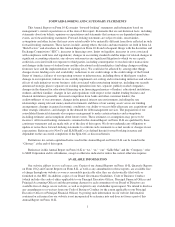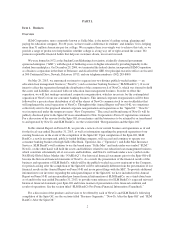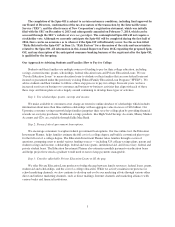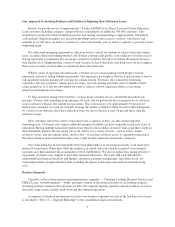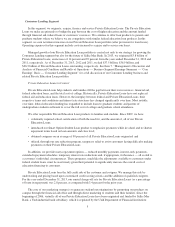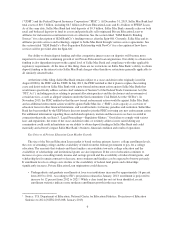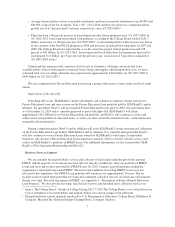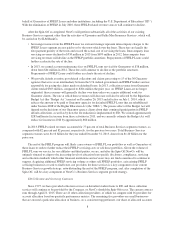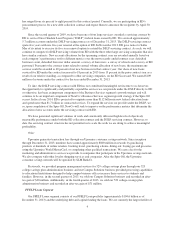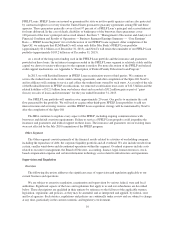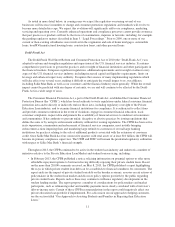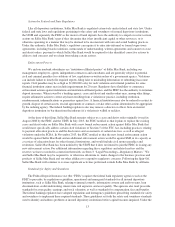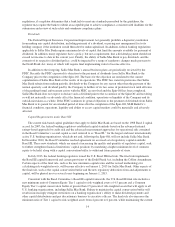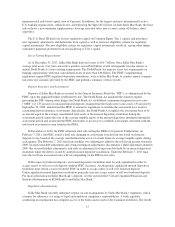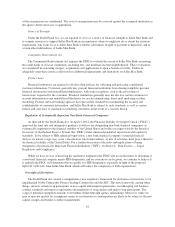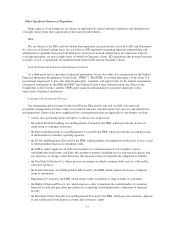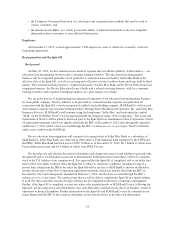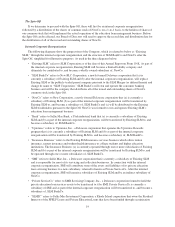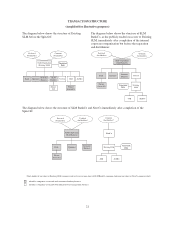Sallie Mae 2013 Annual Report Download - page 13
Download and view the complete annual report
Please find page 13 of the 2013 Sallie Mae annual report below. You can navigate through the pages in the report by either clicking on the pages listed below, or by using the keyword search tool below to find specific information within the annual report.As noted in more detail below, in coming years we expect the regulators overseeing several of our
businesses will increase in number or change and consumer protection regulations and standards will evolve to
become more detailed in scope. We expect this evolution will significantly add to our compliance, marketing,
servicing and operating costs. Currently enhanced operations and compliance processes cannot provide assurance
that past practices or products will not be the focus of examinations, inquiries or lawsuits, including, for example,
the pending regulatory matters described in Item 3. “Legal Proceedings.” Prior to 2009, one or more of our
current or then-existing subsidiaries were involved in the origination and sale of home mortgages, automobile
loans, boat/RV/manufactured housing loans, construction loans, and other personal loans.
Dodd-Frank Act
The Dodd-Frank Wall Street Reform and Consumer Protection Act of 2010 (the “Dodd-Frank Act”) was
adopted to reform and strengthen regulation and supervision of the U.S. financial services industry. It contains
comprehensive provisions to govern the practices and oversight of financial institutions and other participants in
the financial markets. It imposes significant regulations, additional requirements and oversight on almost every
aspect of the U.S. financial services industry, including increased capital and liquidity requirements, limits on
leverage and enhanced supervisory authority. It requires the issuance of many implementing regulations which
will take effect over several years, making it difficult to anticipate the overall impact to us, our affiliates,
including Sallie Mae Bank as well as our customers and the financial industry more generally. While the overall
impact cannot be predicted with any degree of certainty, we are and will continue to be affected by the Dodd-
Frank Act in a wide range of areas.
The Consumer Financial Protection Act, a part of the Dodd-Frank Act, established the Consumer Financial
Protection Bureau (the “CFPB”), which has broad authority to write regulations under federal consumer financial
protection laws and to directly or indirectly enforce those laws, including regulatory oversight of the Private
Education Loan industry, and to examine financial institutions for compliance. It is authorized to collect fines
and provide consumer restitution in the event of violations, engage in consumer financial education, track
consumer complaints, request data and promote the availability of financial services to underserved consumers
and communities. It has authority to prevent unfair, deceptive or abusive practices by issuing regulations that
define the same or by using its enforcement authority without first issuing regulations. The CFPB has been active
in its supervision, examination and enforcement of financial services companies, most notably bringing
enforcement actions imposing fines and mandating large refunds to customers of several large banking
institutions for practices relating to the sale of additional products associated with the extension of consumer
credit. Once Sallie Mae Bank has four consecutive quarters with total assets of at least $10 billion, the CFPB will
become its primary compliance supervisor. The UDFI and FDIC will remain the prudential regulatory authorities
with respect to Sallie Mae Bank’s financial strength.
Throughout 2013, the CFPB continued to be active in the student loan industry and undertook a number of
initiatives relative to the Private Education Loan Market and student loan servicing, including:
• In February 2013, the CFPB published a notice soliciting information on potential options to offer more
affordable repayment options to borrowers having difficulty repaying their private student loans. Based
on the more than 28,000 comments received, on May 8, 2013, the CFPB published a report highlighting
the ways in which private student loan debt can be a roadblock to financial soundness for consumers. The
report analyzes the impact of private student loan debt on the broader economy, assesses recent actions of
policymakers in the student loan market and discusses policy options put forth by the public regarding
private student loans. Reports such as these may continue to influence regulatory developments in the
student lending market. The report proposes a number of considerations for policymakers and market
participants, such as refinancing relief and monthly payments more closely correlated with a borrower’s
debt-to-income ratio. Certain of these CFPB recommendations in the report could negatively affect our
private education loan portfolio if implemented. For a discussion on our approach to helping customers,
see the section titled “Our Approach to Assisting Students and Families in Repaying their Education
Loans.”
11


